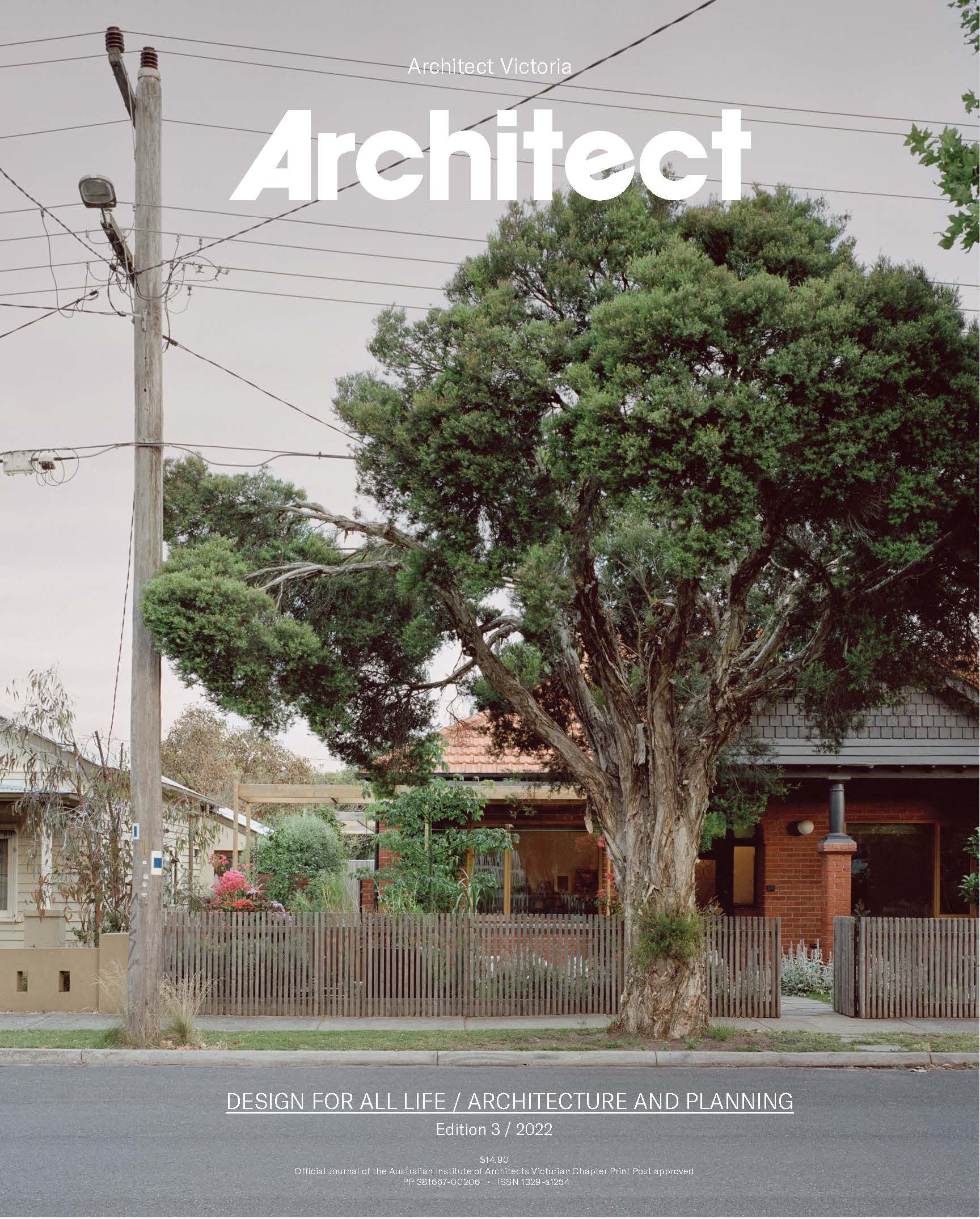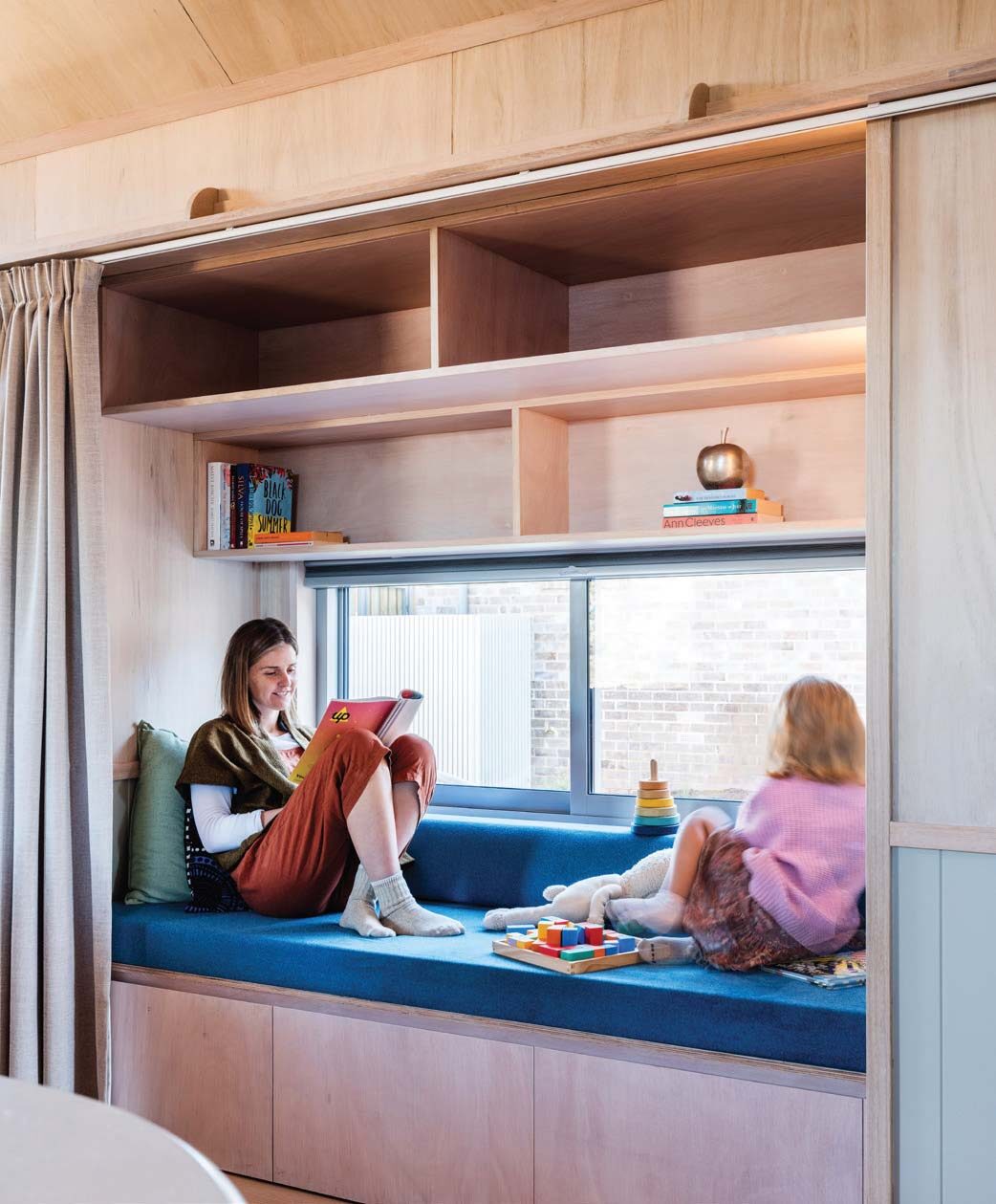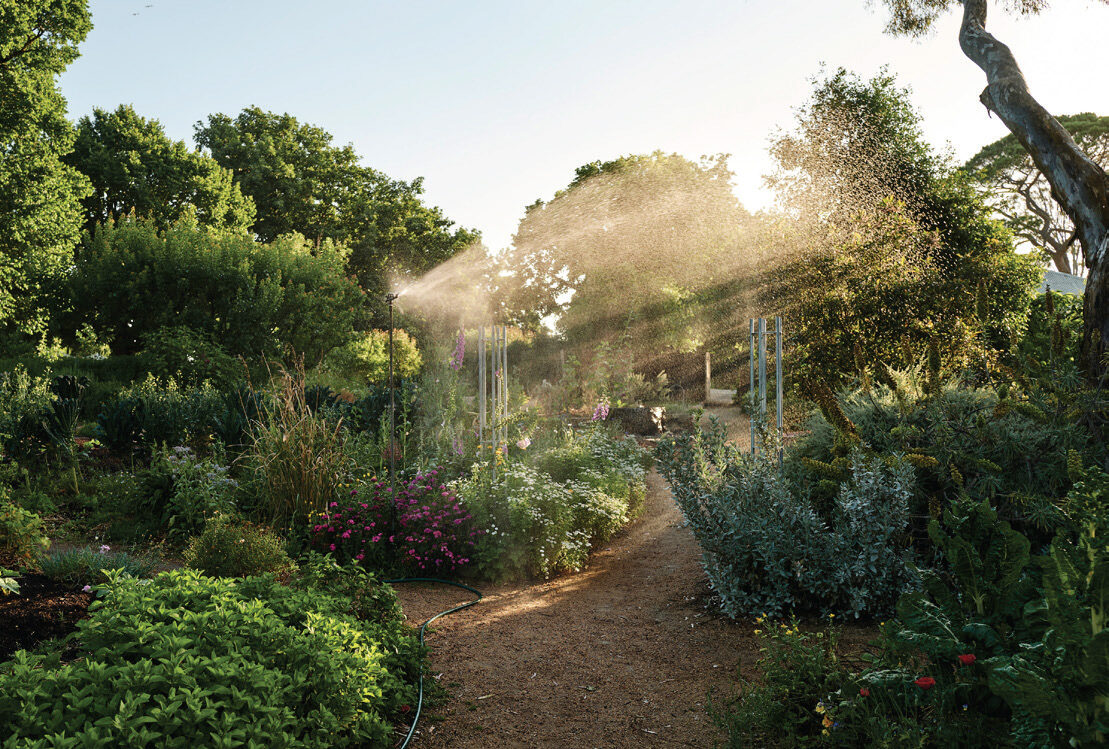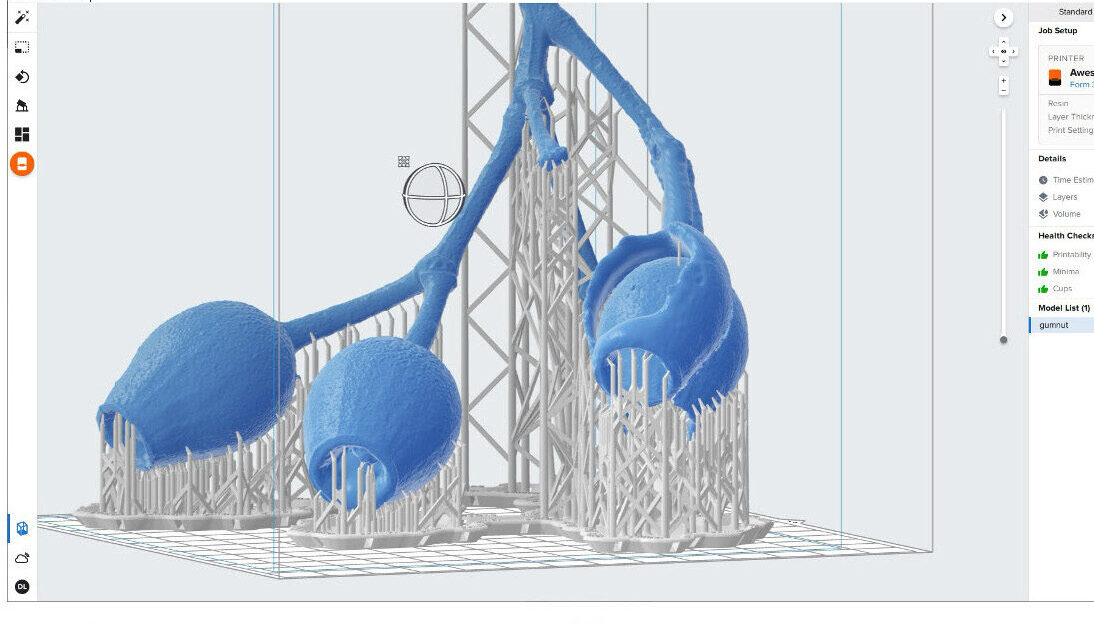Creating an underwater garden
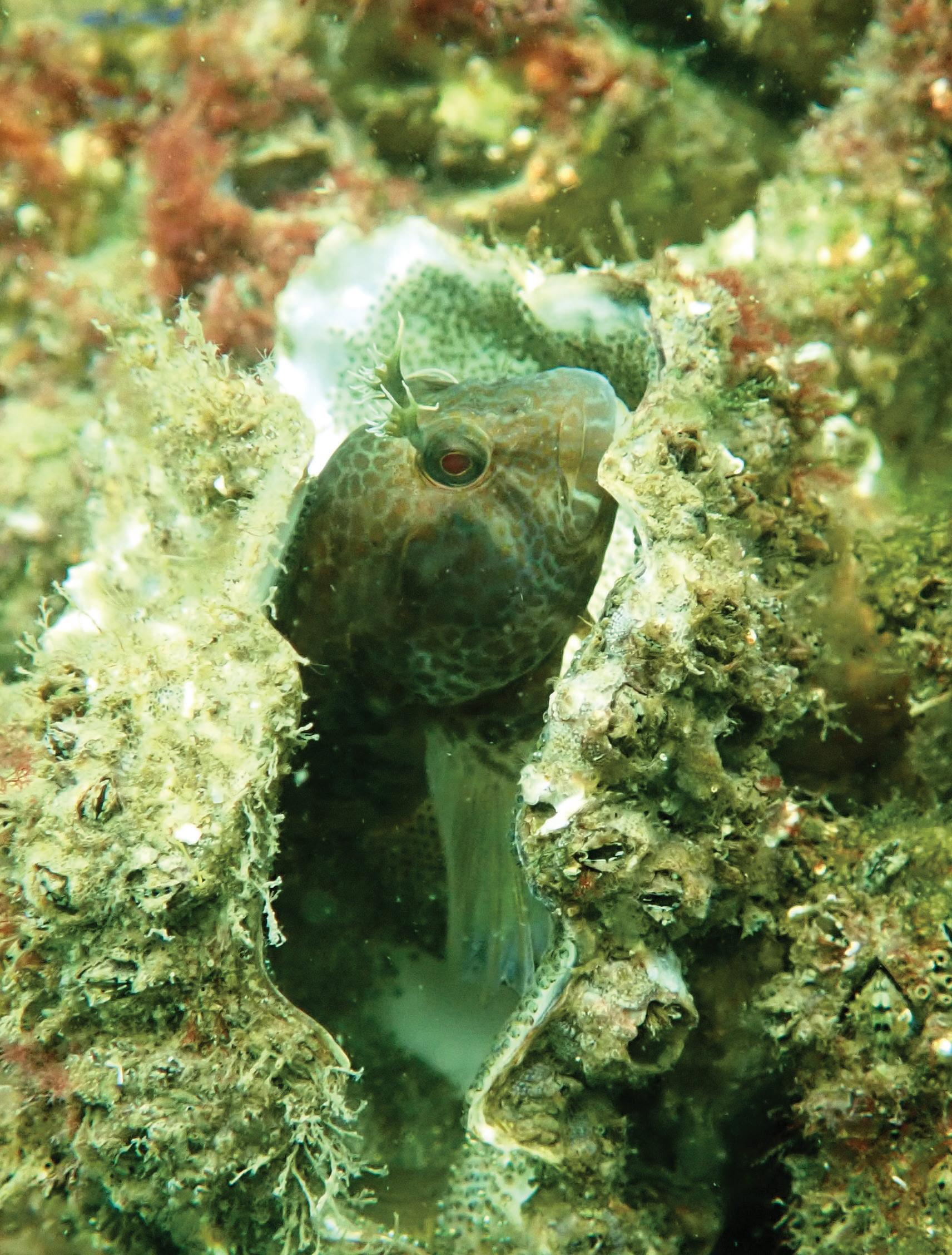
City skylines increasingly feature roofs and walls that are covered in foliage to trap stormwater and moderate internal climates. This approach to greening is now creeping below the waterline as ecologists and designers come together to co-create living seawalls.
Urban sprawl is no longer a land-based problem.
Sydney Harbour, like many coastal cities around the world, has sprawling structures extending below the waterline. These structures have modified more seafloor than is occupied by the world’s mangrove and seagrass forests causing widespread damage.
Humans design structures such as seawalls for protection of their assets or to support their activities, often with little thought for the habitats lost. These structures can result in ecological deserts, supporting little marine life or become dominated by invasive species. To improve their bioreceptivity, humans can instead co-design these urban structures with nature by blending ecology with innovative engineering.
The redevelopment of East Darling Harbour into Barangaroo is one of the most significant urban renewal projects to date in Sydney, Australia. It covers 22 hectares in total and spans 2.2 kilometres of innercity foreshore. The site was once part of the hunting and fishing grounds for the Traditional Owners of the land, the Gadigal people of the Eora Nation. The name “Barangaroo” recognises a Cammeraygal woman of the same name. From the 1800s to now, the site housed a mix of industrial and commercial uses until the current redevelopment into offices, dining, entertainment, and outdoor spaces.
Life underwater at Barangaroo has been stressful. The darkness cast by towering skyscrapers and noisy port activities have discouraged many of the fish that would have once lived along this foreshore. Prior to the 1800s there were sandy seafloors sloping upwards to rocky outcrops and swampy wetlands, but these natural habitats have gradually been replaced by an underwater concrete jungle of seawalls and pylons. This construction displaced the burrowing worms, shellfish and shrimp that used to live here. The new human-made surfaces provide poor surfaces for marine life, like seaweeds, oysters and barnacles to grow on, preventing their return.
Since 2015, scientists from multiple universities, state government agencies and the Sydney Institute of Marine Science have been working with designers from Reef Design Lab and architects from Lendlease to co-design a living seawall and an underwater garden at Barangaroo. We have created catalogues of the underwater habitats and species living there to inform the enhancements.
We installed nearly four hundred habitat panels at multiple depths that span Watermans Cove in South Barangaroo. Our panels mimic the rocky reefs and seaweed forests found naturally around Sydney Harbour and include features such as rockpools that trap water during low tide, providing protection from heat to tiny crabs and worms. Other panels resemble the oyster reefs, seaweed roots, and sponge fingers that are key habitats for animals like snails, limpets, chitons, and fish.
To create these complex features, we used 3D-print moulds and then cast the panels in concrete which included upcycled industry by-products. At Barangaroo, we also enhanced the habitat panels with mixtures of recycled oyster shells sourced from Melbourne fish markets, or sandstone rock. The aim of this enhancement is to reduce our carbon footprint and improve the sustainability of the habitat panels.
A few months after the installation, we planted seaweeds to create an underwater garden and kickstart growth on the panels. The seaweeds are a native brown kelp species called Ecklonia radiata that we sourced in collaboration with the engineers, SMC Marine, who installed the habitat panels. SMC Marine maintain pylons at multiple locations, and we took the opportunity to harvest kelp for transplantation to Barangaroo from pylons scheduled for removal. Kelp was collected and planted to create the garden at Barangaroo on the same day. An advantage of sourcing kelp already living nearby Barangaroo is that it has adapted to local conditions and so is more likely to survive after planting.
The underwater garden is now 18-months-old and teeming with life that will eventually be self-sustaining for decades. The shallower panels are visible at low tide, but the deeper panels lie below the waterline to support the animals and plants that can’t live out of water. Tiny fish have moved in and taken up residence, baby seaweeds are growing on the panels. We will continue to garden the site for the next four years by monitoring and removing any weeds (invasive species) with support from Infrastructure New South Wales.
The underwater garden is part of the Living Seawalls project that is bringing marine life back to built structures in coastal cities and continues to grow with over 1000 habitat panels installed at more than 16 sites worldwide. Our living seawalls support up to 36% more biodiversity than traditional seawalls1 and the mosaic of designs provides a variety of homes for unique species.2
This project demonstrates that all marine constructions can and should consider benefits to humans and nonhuman species.3
Notes
Funding from Lendlease, Infrastructure NSW, NSW DPI and the Australian Research Council LP140100753. We also thank Anita Mitchell for her contributions to the project.
1 Bishop, Melanie J., Maria L. Vozzo, Mariana Mayer-Pinto, and Katherine A. Dafforn. 2021. “Volvo Cars Australia: Sydney Institute of Marine Science ‘Living Seawall’ Biodiversity Assessment.” Sydney: Macquarie University, Sydney Institute of Marine Science, University of New South Wales.
2 Bishop, Melanie J., Maria L. Vozzo, Mariana Mayer-Pinto, and Katherine A. Dafforn. 2022. “Complexity–Biodiversity Relationships on Marine Urban Structures: Reintroducing Habitat Heterogeneity Through Eco-Engineering.” Philosophical Transactions of the Royal Society B: Biological Sciences 377 (1857): 20210393. https://doi.org/10/gqr2fz.
3 https://www.livingseawalls.com.au/
Katherine A Dafforn is an environmental scientist recognised for her contributions to understanding and managing urban impacts in marine systems. She completed her PhD and joined Macquarie University in 2018. She is co-founder of the Living Seawalls project, which is based at the Sydney Institute of Marine Science.
Laura Airoldi is professor chair in ecology and deputy director of the Chioggia Hydrobiological Station at Padova University. She is listed among the top Italian Scientists and in 2019 and 2021 was recognised as a Web of Science Highly Cited Researcher. Her research focus is biodiversity conservation and restoration of urbanised marine environments.
Melanie Bishop is a coastal ecologist with over 15 years of experience researching temperate ecosystems of Australia and the US. Her team’s research addresses how these ecosystems operate and respond to change. She is co-founder of the Living Seawalls project, which is based at the Sydney Institute of Marine Science.
Tim Glasby is a principal research scientist with 30 years experience as a marine ecologist working in temperate marine systems, having been employed as an academic, environmental consultant and a government researcher. His research on marine urbanisation, impact assessment and invasive species is internationally recognised and has influenced numerous researchers and government policies.
Alex Goad is a designer and artist based in Melbourne. Alex completed his Bachelor of Industrial Design at Monash University in 2013 where he developed MARS – Modular Artificial Reef Structure. The project won multiple awards and led to Alex starting Reef Design Lab to continue this work.
Emma Johnston is the deputy vice chancellor (Research) at University of Sydney. She heads the Applied Marine and Estuarine Ecology Lab and has led major projects for industry, government, the Australian Research Council and the Australian Antarctic Science Program on the ecology of human impacts in marine systems.
Aria Lee is a marine ecologist and invertebrate biologist. Her research has focussed on understanding the biology and facilitators for invasive species in urbanised coastal areas. She is the program manager for the Living Seawalls project at the Sydney Institute of Marine Science.
Mariana Mayer-Pinto is a Scientia senior lecturer. She obtained her PhD in Marine Sciences from the University of Sydney, 2009 and holds a MSc in Zoology from the Federal University of Rio de Janeiro. She is co-founder of the Living Seawalls project, which is based at the Sydney Institute of Marine Science.
Emily Ravenscroft is a development manager. She is passionate about placemaking and enriching life between buildings with thoughtful urban planning, quality building design, landscape and public art. Emily has worked in design, construction and property for 20 years, and has experience across sectors, as an architect, project manager and development manager.
Annie Tennant has a Bachelor of Architecture from UNSW and a Master of Urban Design from the University of California Berkeley. She has over 20 years of experience in property, construction, design and development. Annie is on the Landscape Architecture Advisory Panel for the UNSW Landscape program and is an MS Angel.
Maria Vozzo is a marine ecologist with research interests in marine urban ecology and habitat restoration. Maria is currently a research fellow at CSIRO. Her work is investigating methods to scale up marine habitat restoration. She was previously the program manager of the Living Seawalls.
